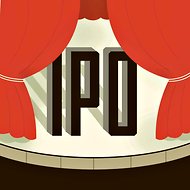Weak data on jobs tripped up Wall Street on Friday, capping the worst week of the year for the Standard Poor’s 500-stock index and throwing cold water on optimism that the country was finally poised for a sustained recovery.
The employment figures for March showed that employers added the fewest jobs in nine months and that more people gave up looking for work. Employers added just 88,000 jobs, according to the Labor Department’s monthly survey. That is half the pace of the previous six months. The report was far worse than economists had forecast and a disappointment for investors following positive signs on housing and the job market over the winter.
The Dow Jones industrial average fell 40.86 points, to 14,565.25, down 0.3 percent. The index was down as much as 171 points in the early going, but it rose gradually throughout the day. The Standard Poor’s 500 fell 6.70 points, or 0.4 percent, to 1,553.28. The S. P. was down 1 percent for the week. The Nasdaq composite index, which includes many technology companies, fell 21.12 points, or 0.7 percent, to 3,203.86.
The employment survey, one of the most closely watched economic indicators, dented investors’ confidence in the country’s economic rebound. The stock market has surged this year, and the Dow hit another high close on Tuesday. The index is still up 11.2 percent this year.
“Things are still looking decent, but there’s no doubt that this was a bit of a disappointment,” said Brad Sorensen, the director of market and sector research at Charles Schwab. “We’re watching to see: is this the start of another soft patch?”
The Treasury’s benchmark 10-year note rose 15/32, to 102 4/32, and the yield plunged to 1.71 percent, from 1.77 percent late Thursday. The yield declined to 1.69 percent at one point on Friday, the lowest since December. The benchmark rate has declined sharply over the last month, from 2.06 percent on March 11, because demand for low-risk assets increased as evidence mounted that domestic growth was slowing.
Technology stocks fell the most of the 10 industry groups in the S. P. 500, dropping 1 percent. Among big decliners in tech stocks, Cisco Systems shares fell 43 cents, or 2 percent, to $20.61. Oracle stock dropped 34 cents, or 1 percent, to $32.03.
Investors were cutting their exposure to risk, in addition to buying Treasuries, by playing it safe with companies that provide rich dividends and stable earnings. Utilities and telecommunications industries, for example, bucked the downward trend in the market, with both rising 0.4 percent on Friday.
The Dow Jones transportation average, which includes airlines like United and Delta and shipping companies like U.P.S. and FedEx, was down 3.5 percent for the week, its biggest weekly decline since September. The index is thought to be a leading indicator of the broader market.
Investors will shift their focus to earnings reports next week.
Alcoa, the first company in the Dow index to report earnings, will release its first-quarter financial results after the markets close on Monday.
Article source: http://www.nytimes.com/2013/04/06/business/economy/daily-stock-market-activity.html?partner=rss&emc=rss




 Updating…
Updating…